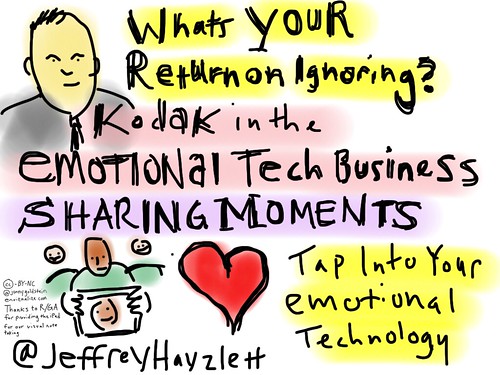How to Engage with Social Computing
How to Engage with Social Computing is the 15th in a series of excerpts from our book, Be a Person: the Social Media Operating Manual for Enterprises. The book (itself part of a series for different audiences), is available in paper form at http://bit.ly/OrderBeAPerson save $5 using Coupon Code 62YTRFCV
How to Engage with Social Computing
“Audience Engagement is the proportion of visitors who participate in a
specific marketing initiative by contributing comments,
sharing or linking back”
Web Analytics DeMystified/Altimeter
The Holy Grail of social media is engagement. You’ll see lots of blogs, comments, studies, and other discussion on the Internet about social media engagement. Everyone assumes this is the highest goal one can achieve using social media, because an engaged community is more likely to hear your message, do what you request them to do, and in general hang around and say nice things about you. But what actually is this elusive thing: engagement?
What is Engagement?
Oddly, for a medium that talks a lot about improving engagement, there’s not a lot of consensus on exactly what the term means. We present one definition — by two analyst firms, Web Analytics DeMystified and Altimeter — in the quote that begins this chapter, but it, like many definitions out there, actually seems to be more about defining the ways you can measure engagement than engagement itself. In their excellent report, “The world’s most valuable brands. Who’s most engaged?”[1] Altimeter joins with fellow analyst firm Wetpaint to measure major brands’ level of social media engagement. Not once is the concept explained or defined. They obviously expect their audience of brand marketers to implicitly understand the term.
They’re not alone. Lots of other really smart social media folks also seem to think engagement is merely a way to measure success. Lee Odden, online marketing and search engine master at Top Rank Online Marketing, says:
Linking, bookmarking, blogging, referring, clicking, friending, connecting, subscribing, submitting inquiry forms and buying are all engagement measures at various points in the customer relationship.[2]
With all due respect to Odden’s enormous expertise, blogging is a measure? We think it’s an activity. That engaged people do.
Others talk about the rewards enterprises can reap from the engaged. Social media guru Brian Solis points to statistics about engagement’s effects on sales: “An impressive 51 percent of Facebook fans and 67 percent of Twitter followers indicated that they are more likely to buy since connecting online.”[3]
Along these same lines, social media expert Jason Falls simplifies the definition, but perhaps a little too much: “Did you get something from your audience that can make your business better?”
Online community expert Amber Naslund gets a bit more specific, and a bit closer to an actual definition of engagement, saying[4] it involves one or all of the following:
- Interaction with unselfish intent
- Conversation
- Acknowledgement that we’ve been heard
- Responsiveness
- Unique contributions
- Personalized connection
The rest of the definitions we’ve seen run from the simplistic, and not all that helpful (“Conversing with others online in public and branded spaces” for example)[5] to lists of things to do to engage your community (provide high-quality content, answer questions, participate in conversations, provide great customer service to customers and potential customers, go off-line, meet in person).[6]
We don’t really mean to tweak all these experts, but it is a sign of the new and maturing nature of social computing that so many talk about engagement, but so few attempt to define exactly what the term means. Apparently it’s like art: We can’t define it, but we know it when we see it.
We define social media engagement as interacting with a community that is:
- Listening
- Trusting
- Responding
- Communicating
- Acting
They are listening to you, maybe not all the time, but regularly or periodically. They trust what you say because you’ve built a rapport and a relationship with them. They respond to you, either by means of comments or other online participation, or by telling others about you. They are communicating their concerns, needs, passions, and interests to you; thus you can know them better. And, most importantly, they are acting. They may be buying your products, telling other about them, commenting, recommending, rating, or taking any of the myriad of actions you provide for them to get involved.
If your community is doing these things, they are engaged. And that’s pretty much all you need to know about that.
Next up: Joining the Conversation
[1] Altimeter / Wetpaint report: bit.ly/csC04K
[2] Quoted by Jason Falls: bit.ly/bhqZbg
[3] Solis: bit.ly/djsMvj
[4] Amber Naslund runs social monitoring company Radian6’s online communities: bit.ly/9ax9pM
[5] SayItSocial, who define themselves as Social Engagement Consultants: bit.ly/bD6b3j
[6] In a post entitled, ironically, “Six Ways to Define Social Media Engagement”: bit.ly/aReh54








0 Comments on “How to Engage with Social Computing”